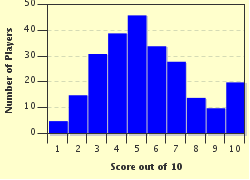Quiz Answer Key and Fun Facts
1. The First Century CE: Which Celtic king was responsible for the Roman invasion of Britain in 43CE?
2. The Second Century CE: By what name is the Vallum Aelium, constructed in 122CE, better known?
3. The Third Century CE: Everyone knows that the City of London, that square mile at the heart of Britain's capital city, suffered devastating bomb damage during World War II. Reconstruction of the City took several years, and in 1954 construction crews working in Walbrook Street unearthed an important Roman site, dating from the third century CE. What was it?
4. The Fourth Century CE: In 1974, a treasure of 4th century Roman British origin was discovered at Water Newton in Cambridgeshire. What was it?
5. The Fifth Century CE: By the late fourth/early fifth century CE the Roman Empire was falling apart. In what year did Rome abandon Britain?
6. The Sixth Century CE: Which leader of the Gregorian Mission to England became the first Archbishop of Canterbury in 598?
7. The Seventh Century CE: In 663/664 the Synod which established the date of Easter was held in which northeastern English town?
8. The Eighth Century CE: In 757 Offa became king of which region of Britain?
9. The Ninth Century CE: The ninth century was the era of the Viking invasions of Britain. In 866 they captured which city known as Eboracum in Roman times?
10. The Tenth Century CE: Aethelred became king of England in 970CE. What is the original meaning of his epithet 'the Unready'?
Source: Author
Cymruambyth
This quiz was reviewed by FunTrivia editor
bloomsby before going online.
Any errors found in FunTrivia content are routinely corrected through our feedback system.

